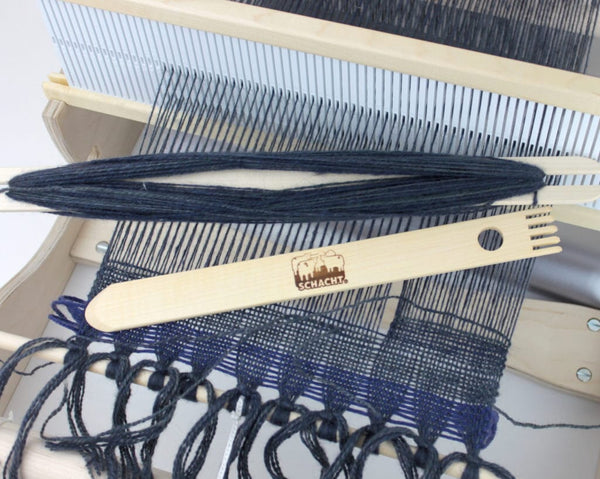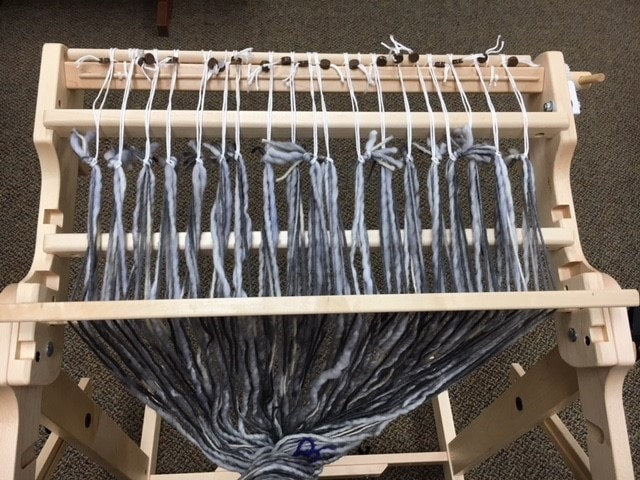Dear Tabby,
I have a some luxury yarn that I want to weave with as little loom waste as possible. HELP!
Exasperated Evelyn
Dear Evelyn,
There are ways to maximize your warp and waste as little precious yarn as you can, so have no fear.
Both of these techniques can be done on a rigid heddle loom or floor loom. The traditional way of tying on uses surgeon’s knots or bows around the apron bar. While knotting is a secure way to tie on to your apron bar, it can eat up 6 to 10ʺ of warp yarn.

Tying on with knots
You can save space at the front and back of your warp using two different methods.
At the front, after threading your reed, tie groups or “bouts” of threads together with an overhand or lark’s head knot. I like to do this in 1/2ʺ to 1ʺ bundles in order to get more even weaving and fewer gaps at the beginning of my project. Then take a long cord (Texsolv cord works great) and tie one end around the apron bar. Thread it through the first bout of threads, wrap it around the apron bar, then thread through the next bout of threads. Repeat wrapping and threading across until you’ve gotten through all of the thread groups. To finish, tie the end of the cord to the apron bar.

Lashing on to the front apron bar. Photo courtesy of Jeen on Ravelry
Once this is all set up, crank up the tension on your warp, then give your lashing-on cord a bit of a thwack with your hand, and the tension should even out across your warp. You can start weaving almost right up against the knots with minimal waste of warp or weft.
At the back, each bundle of threads is attached to the apron bar with a tie-up cord (normally found on a floor loom.) This requires attaching all of the tie-up cords to the apron bar first. I recommend putting the side with the “button” near the apron bar. Then attach each bundle to a tie-up cord with a larks head knot.

Using tie-up cords at the back apron bar
We hope these tips help you!
Happy Weaving!
—Tabby

